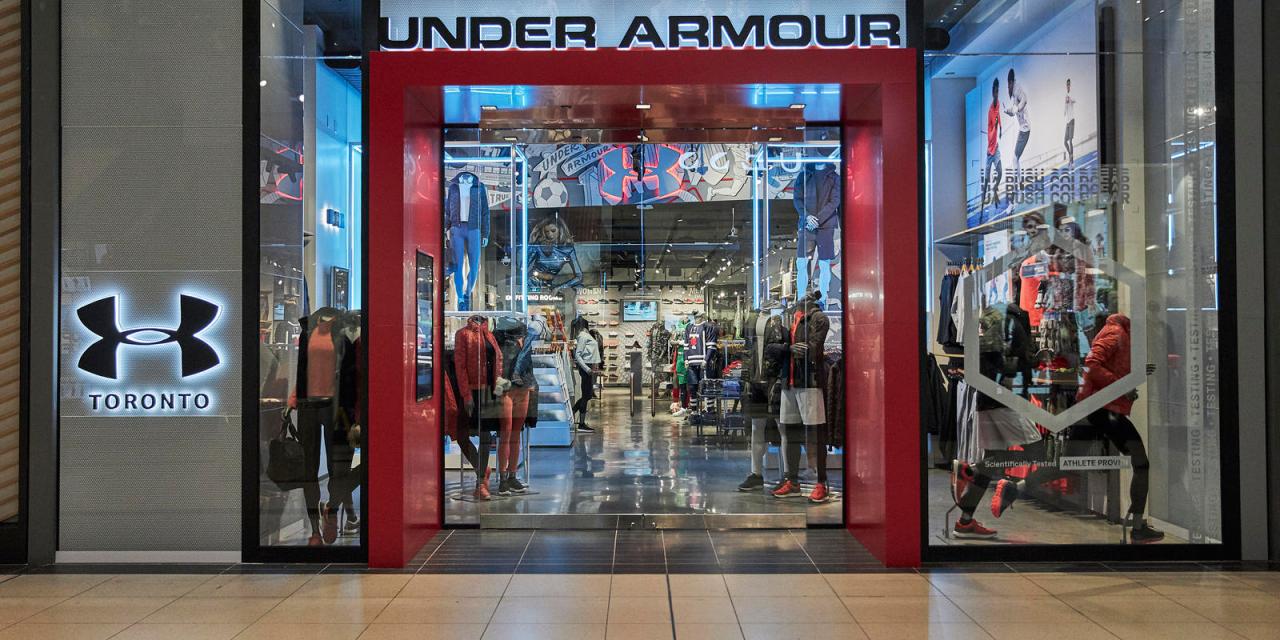On and Under Armour’s earnings highlight diverging fortunes in the athletic space

On and Under Armour are on opposite sides of the athletic apparel spectrum, both in their growth plans and their quarterly earnings results.
Under Armour’s revenue for the quarter that ended March 31 was down 5% to $1.3 billion. During the same period, On Holding’s net sales rose by 20.9% to 508.2 million Swiss francs (over $561 million). Under Armour plans to cut down its inventory levels as part of its restructuring plans, while On plans to roll out new products in the coming months.
Despite being in the athletic category, Under Armour and On are witnessing different results. This is due in part to the rising popularity of younger performance brands, which are disrupting the market that has long been dominated by legacy brands. And Under Armour, which in the early aughts was considered a hot young startup, now feels firmly a part of the latter category. For the full fiscal year, On expects net sales to grow by at least 30%, and Under Armour expects a low-double-digit percentage revenue decline.
On was founded in 2010 by former Swiss Ironman champion Olivier Bernhard together with David Allemann and Caspar Coppetti. On is also backed by tennis superstar Roger Federer and went public in 2021. When On launched in 2010, its focus was on developing premium, exclusive running shoes. Copetti previously told Modern Retail that when On first launched, it wanted “to be the most expensive product on the market.” It has since used its technical expertise to branch into other categories, including apparel, accessories and other types of shoes.
Under Armour was founded in 1996 with a focus on performance-based sportswear made with different materials that could keep athletes cool, dry and light. But in the past couple of years, Under Armour has struggled to differentiate itself from other brands in the athletic category. It has also struggled to evolve its brand identity amid pushes into other areas like connected fitness. Around this time last year, it unveiled the “Protect This House 3” strategy, which targets stable profitable growth and returns for shareholders in the long run.
“There will be winners and losers within the overall space,” Charles Lewis Sizemore, chief investment officer of Sizemore Capital, told Modern Retail. “And right now, On is absolutely one of those winners.”
The Swiss sneaker brand has been on a winning streak. On plans to double its net sales between 2023 and 2026. The company said it has been “gaining market share” thanks to its Cloudmonster running shoe, Cloudsurfer and Cloudrunner running shoes. The company is also expanding its physical store fleet, just recently opening its largest U.S. store in Portland, Oregon in February and a second store in Paris scheduled to open next month.
On’s growth had been largely driven by its strong direct-to-consumer sales. Its DTC sales rose 39% in the quarter. Sales for On’s DTC channel now make up 37.5% of its total volume. During the Paris Olympics, the company will be introducing new products before the opening ceremony and it hopes that its two stores in the area would serve as a hub for customers during the games.
“What makes us especially proud is that we are achieving this growth at an ever-increasing higher profitability,” Caspar Coppetti, co-chairman and co-founder at On, said during a call with investors and analysts. “Our gross profit margin of close to 60% in the first quarter underscores the power of our strategy to be the most premium global sports brand.”
Under Armour, on the other hand, has had a financially tumultuous few years and several C-suite changes. Its net income in the fourth quarter was down 96% year-over-year to $6.6 million.
In 2023, Under Armour named a new CEO, former Marriott executive Stephanie Linnartz. But, within a year, the company announced that founder Kevin Plank would return as CEO. Plank took over the top role in in March and, in June, the company announced that it has appointed a new chief consumer officer as well as a new chief technology officer. Colin Browne, Under Armour’s chief operating officer, and Lisa Collier, the company’s chief product officer, will also leave the company in the next few months.
“This is not where I envisioned Under Armour playing at this point in our journey,” Plank said during the earnings call. “That said, we’ll use this turbulence to reconstitute our brand and business, giving athletes, retail customers, and shareholders bigger and better reasons to care about and believe in Under Armour’s potential.”
The Baltimore, Maryland-based company announced during its earnings call that it plans to lay off an unspecified amount of employees as part of its restructuring plan. The company is also in the process of revitalizing its product lineup and making innovation a priority, and to do so it plans to cut 25% of SKUs that don’t fit its standards in the next 18 months. Including the cost of employee severance, the restructuring plan will cost around $70 million to $90 million.
Sizemore said that Under Armour has struggled to find its identity over the past couple of years. “They’re stuck in the middle and that’s a tough place to be,” he said. “Management realizes that and that’s part of what their restructuring is. They’re trying to get out of this limbo area and push more definitively into the high end.”
R.J. Hottovy, head of analytical research at Placer.ai, said that Under Armour and On’s differing strategies reflect their maturity in the athletic business. While the two brands have varying expectations over the next couple of months, Hottovy said they are both vulnerable to broader macroeconomic trends.
“We’ve seen pretty much in April and May that consumers are pushing back because of inflation and other macro pressures,” he said. “That’s still the number one thing that these brands have to face.”

